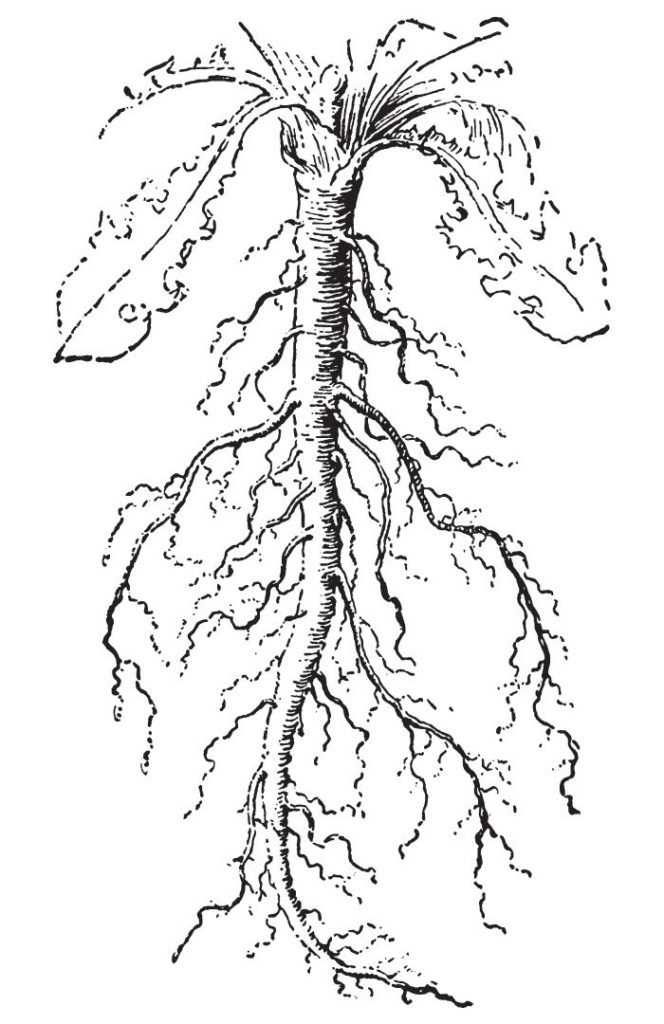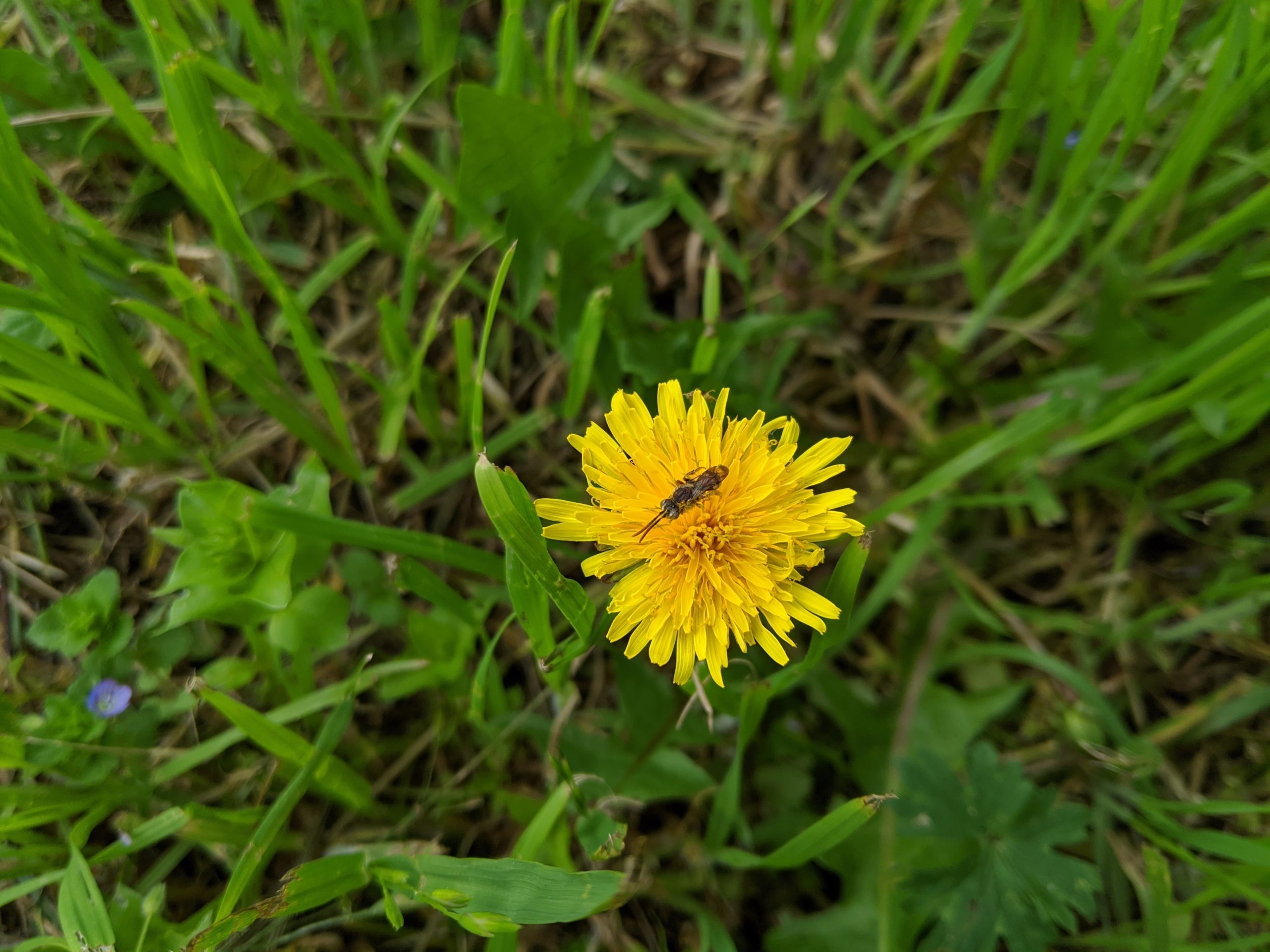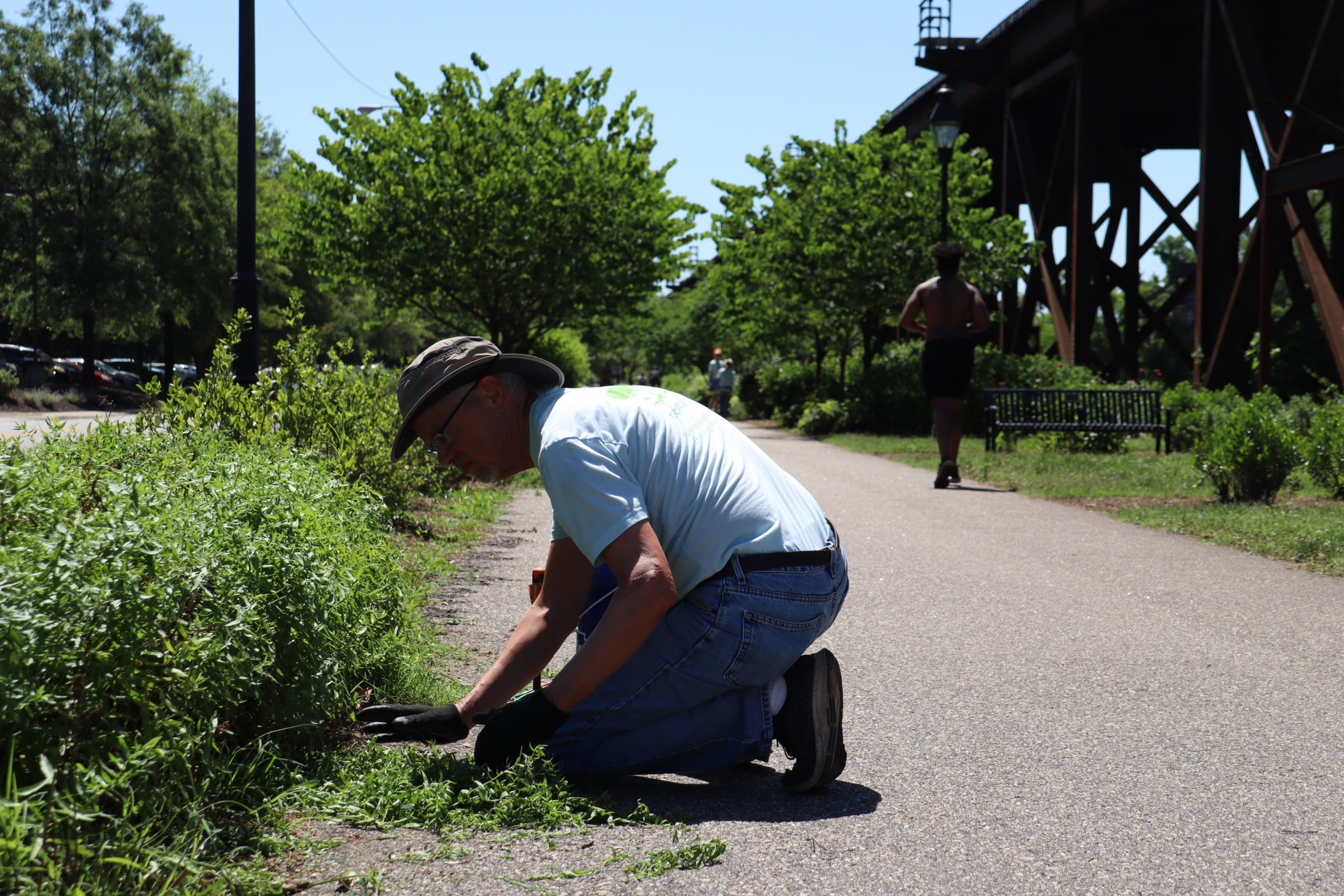Author: Anna G. Aquino
Consider for a moment a world without weeds. We would be traipsing on bare dirt and mud as the ground erodes away underneath our feet. Thankfully weeds immediately colonize even the most inhospitable of soils, they cool the ground, keep soil microorganisms alive, and help prevent soil erosion. Their aggressive root systems, especially those with taproots, can mine minerals and moisture from deep layers of the earth, bringing them up the soil profile and making them accessible to other plants.  Soil tilth is improved, their roots open air spaces and break up compacted soil. Desired plant communities can benefit from their services. Weeds are indicator species of soil composition and soil deficiencies. For example, curly dock thrives in compacted soil low in calcium and extremely high in phosphorus, while the presence of pigweed can be a sign that the iron-manganese ratio is out of kilter. Dandelion, nutsedge, and crabgrass can be indicators of soils with a high bacteria content, and if trees, shrubs, and perennials are planned for, the soil composition must be altered from a bacteria dominated one to a fungi dominated one.(1) Weeds also provide valuable and much needed services for insects.
Soil tilth is improved, their roots open air spaces and break up compacted soil. Desired plant communities can benefit from their services. Weeds are indicator species of soil composition and soil deficiencies. For example, curly dock thrives in compacted soil low in calcium and extremely high in phosphorus, while the presence of pigweed can be a sign that the iron-manganese ratio is out of kilter. Dandelion, nutsedge, and crabgrass can be indicators of soils with a high bacteria content, and if trees, shrubs, and perennials are planned for, the soil composition must be altered from a bacteria dominated one to a fungi dominated one.(1) Weeds also provide valuable and much needed services for insects.
 However, in large numbers, weeds can elbow out desired plants, taking moisture and nutrients, shading and crowding, and weeds are a distraction in a high quality garden.
However, in large numbers, weeds can elbow out desired plants, taking moisture and nutrients, shading and crowding, and weeds are a distraction in a high quality garden.
So, what do we do about weeds? Conventional methods include spraying herbicides such as Roundup.
- The World Health Organization, after extensive studies regarding a possible link between glyphosate (the active ingredient in Roundup) and cancer, declared that it is a “probable carcinogen.” (2)
- There is evidence of a link between long-term high use exposure to Roundup and an increased risk of developing non-Hodgkin’s lymphoma (3), as well as causing other health problems. It should be noted that the stance of the EPA is that glyphosate has not been proven to be dangerous.(4) Several communities in the United States have banned the use of glyphosate and juries have awarded huge damages in cases involving Roundup.(5)
- Some plant species are becoming resistant to glyphosate, along with the advent of “superweeds.” (6)
- There is ever-increasing detection of glyphosate in food products and in the environment. (Please see 7,8,9,10 for further information on Roundup, GMOs, health, and litigation.)
Due to the possibility of pathogenic effects to people, wildlife, and the environment, Capital Trees is discontinuing the spraying of synthetic weed killers like Roundup, and focuses on sustainable weed control on completed projects. Instead of spraying synthetic weed killers, we primarily control weeds by manual/mechanical removal i.e. good old-fashioned weeding. Mechanical removal includes chainsaws, gas pruners, saw blades, weedeaters, and hand tools like weed wrenches, mattocks, and most especially hand in glove to remove unwanted plants from our gardens. We always attempt to pull weeds before they go to seed and exponentially cause trouble. And we try not to till or turn the soil, as it brings up the seed bank along with disrupting the fungal network and hard-working food web. Capital Trees relies on a growing volunteer program for this sustainable management practice. We average over 1000 volunteer hours a year in our 5.5 acres of public landscapes. The value of these hours is close to $30,000 annually. The largest portion of volunteer time is dedicated to manual weed control. We are grateful to the many volunteers who make light work of this task. You can join us in our sustainable work HERE.

Capital Trees has also explored organic herbicides. Organic “burndown” herbicides destroy the above-ground portion of the plant that is sprayed, but are not systemic, meaning they do not translocate to roots to kill the whole plant and to-date are less effective than systemic synthetic herbicides. They are made from soaps, citric acids, and essential oils (clove, cinnamon, thyme) and may take multiple applications to deplete root reserves of stored energy and kill plants and still may not perform. They work best on young and small weeds, especially annual weeds. A strong word of caution is required because at least one manufacturer of a purported organic herbicide apparently turned out to be a complete fiction. A product called EcoMight, claimed to be largely essential oils and clove, is under investigation by the State of California for containing significant amounts of glyphosate. (11) Several years ago we elected not to use so-called “safe” white vinegar as a herbicide, because it could kill our cherished salamanders and frogs. Additionally, we considered using salt as a herbicide, but common sense and a little research tell us that salt accumulation in the environment would be asking for long term problems, plus salt is not just a desiccant of weeds, but of earthworms, insects, and soil microbes. Capital Trees continues to explore the use of organic herbicides. However, we are not using organic herbicides at this time and focus our efforts on manual weed removal.
Another strategy Capital Trees uses to combat weeds is heavy planting, reducing as much as is feasible the available soil space to be colonized by weeds. This practice works great using mail order “landscape plugs,” from, for example, Northwind Perennial Farm. Leaving plant debris to decay on the ground as well as having a mulch layer are important in weed management.
Capital Trees is also careful not to over-water our gardens. It is best to err on the side of under-watering so plants are encouraged to grow deep roots and to be strong and healthy. Other weed control methods include solarization and cardboard layering. Stay tuned for Capital Trees’ discussion and implementation of these practices in future posts.
(1) Weeds are an indicator of a soil’s health https://www.canr.msu.edu/news/weeds_are_an_indicator_of_a_soils_health
(2) IARC Monograph on Glyphosate https://iarc.who.int/
(3) Zhang, Rana, Shaffer, Taioli, & Sheppard. Exposure to glyphosate-based herbicides and risk for non-Hodgkin lymphoma: A meta-analysis and supporting evidence https://pubmed.ncbi.nlm.nih.gov/31342895/
(4) Glyphosate https://www.epa.gov/ingredients-used-pesticide-products/glyphosate
(5) Roundup Maker to Pay $10 Billion to Settle Cancer Suits https://www.nytimes.com/2020/06/24/business/roundup-settlement-lawsuits.html
(6) The Rise of Superweeds https://www.ucsusa.org/resources/rise-superweeds
(7) Why Roundup Ready Crops Have Lost their Allure https://sitn.hms.harvard.edu/flash/2015/roundup-ready-crops/
(8) DEFOLIANTS AND DESICCANTS https://edis.ifas.ufl.edu/publication/PI138
(9) US EPA to reassess health risks of glyphosate https://cen.acs.org/policy/litigation/US-EPA-reassess-health-risks/100/i23
(10) The Unintended Consequences of Using Glyphosate https://content.sierraclub.org/grassrootsnetwork/sites/content.sierraclub.org.activistnetwork/files/teams/documents
(11) State Warns Organic Farmers to Stop Using W.O.W. Whack Out Weeds! and EcoMight-Pro Pesticides: https://www.cdpr.ca.gov/docs/pressrls/2021/073021.htm#:~:text=Whack%20Out%20Weeds!%20and%20EcoMight%2DPro%20products%20are%20prohibited%20for,not%20disclosed%20on%20their%20labels

